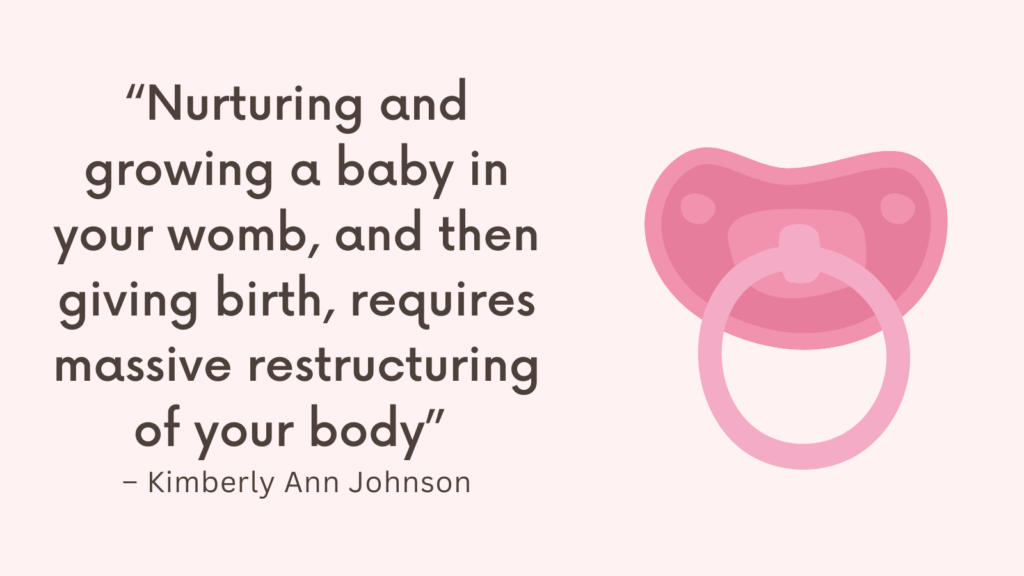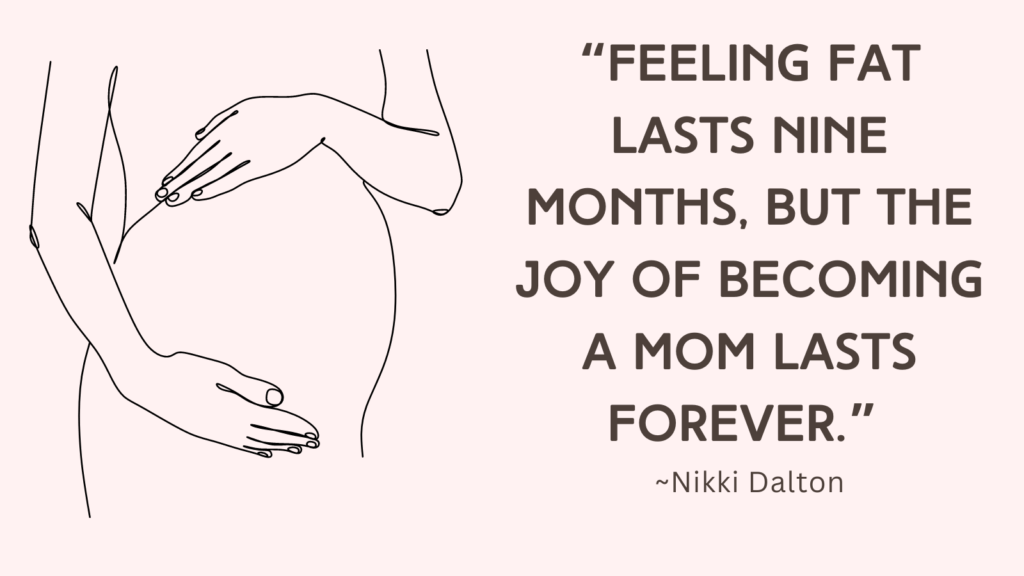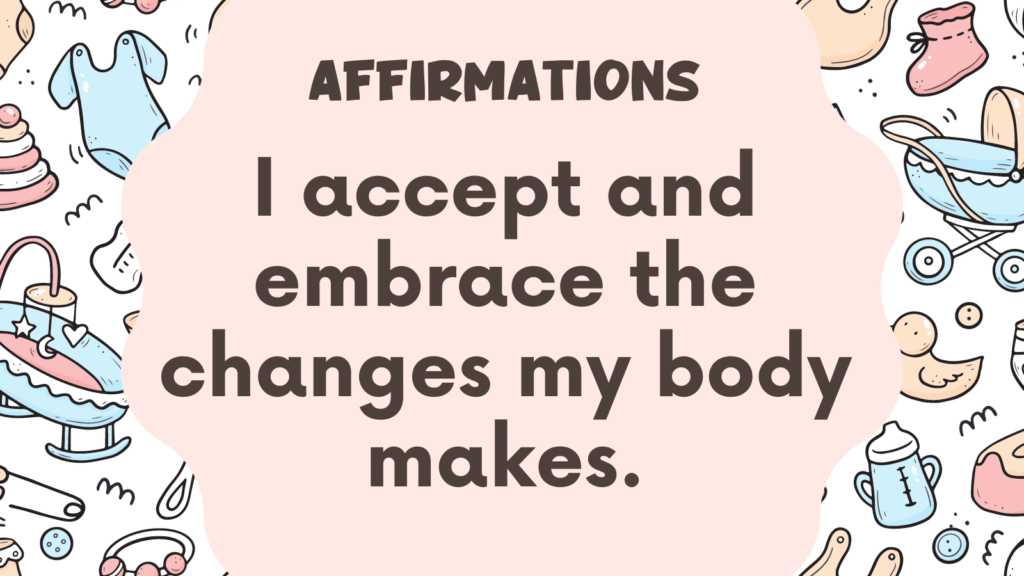In this post, you’re going to learn all about herniated stretch mark – causes and ways to treat it.
What Is Herniated Stretch Mark?
Herniated stretch marks, also known as herniated striae, are a less common form of stretch marks.
Stretch marks, medically known as striae, occur when the skin is stretched beyond its normal limits, causing the dermis (the middle layer of the skin) to tear.
Herniated stretch marks differ from regular stretch marks in that they have a raised or elevated appearance due to the underlying tissues pushing through the damaged skin.
This creates a herniation or protrusion effect, giving the stretch marks a more pronounced and noticeable appearance.
It’s important to note that herniated stretch marks are relatively rare compared to regular stretch marks.
Related: Best 70 Pregnancy Hacks (+Products Recommendation)
Herniated Stretch Mark During Pregnancy
During pregnancy, the skin stretches as the baby grows and the uterus expands.
This stretching can cause regular stretch marks to form, which are a result of the dermis (middle layer of skin) tearing due to rapid growth or weight gain.
Herniated stretch marks, specifically during pregnancy, occur when the underlying layers of tissue push through the torn dermis layer, forming a lump or bulge.
Related: Best 7 Pregnancy Self Care Products
What Causes Herniated Stretch Mark During Pregnancy?
Herniated stretch marks can be caused by several factors:
1. Genetics
Some individuals are genetically predisposed to developing stretch marks, including herniated ones.
If your family members have experienced herniated stretch marks during pregnancy, you may be more prone to them.
2. Rapid weight gain
Sudden and excessive weight gain during pregnancy can put strain on the skin and increase the likelihood of developing stretch marks.
When weight is gained rapidly, the skin may not have enough time to adjust and accommodate the changes.
3. Hormonal changes
During pregnancy, hormonal fluctuations occur, and these can affect the skin’s elasticity.
Hormones like estrogen and progesterone can weaken the connective tissues in the skin, making it more susceptible to tearing.
4. Lack of collagen and elastin
Collagen and elastin are proteins that provide strength and elasticity to the skin.
If there is a deficiency of these proteins, the skin may have reduced resilience and be more prone to tearing.
It is important to note that herniated stretch marks are not dangerous or harmful to your health.
However, if you have concerns about their appearance or discomfort, it is best to consult with a healthcare professional for advice and guidance.
Related: How To Use A Pregnancy Pillow?
How to Prevent Herniated Stretch Mark During Pregnancy?
While it is not always possible to completely prevent stretch marks during pregnancy, there are some steps you can take to minimize the likelihood of developing herniated stretch marks:
1. Stay hydrated
Drinking plenty of water helps keep your skin hydrated and improves elasticity.
2. Maintain a healthy weight gain
Gradual and steady weight gain during pregnancy can help reduce the strain on your skin and minimize the risk of developing stretch marks.
3. Follow a balanced diet
Eating a nutritious diet rich in vitamins and minerals can support your skin’s health.
Focus on foods that promote collagen production, such as fruits, vegetables, lean proteins, and foods high in antioxidants.
4. Moisturize regularly
Applying a moisturizer or oil to your skin can help keep it soft and supple.
Look for products containing ingredients like cocoa butter, shea butter, almond oil, or vitamin E.
Apply the moisturizer in circular motions, concentrating on areas prone to stretch marks.
5. Exercise safely
Engaging in regular, low-impact exercise can help improve circulation and maintain muscle tone, which supports the elasticity of your skin.
Related: Top 12 Tips On How To Deal With Morning Sickness At Work
6. Wear supportive undergarments
Wearing a supportive bra and comfortable clothing that provides gentle compression can help ease pressure on your abdomen and minimize stretching.
7. Avoid harsh chemicals
Certain skincare products contain ingredients that can irritate the skin or decrease its elasticity.
Be cautious and choose products specifically designed for pregnancy or with natural and gentle ingredients.
8. Manage stress
High levels of stress can affect your hormonal balance, potentially impacting the health of your skin.
Prioritize self-care activities, like relaxation exercises, meditation, or prenatal yoga, to help manage stress levels.
Remember, every pregnancy is different, and genetics play a role in determining whether or not you’ll develop stretch marks.
Focus on maintaining overall wellness, and embrace the changes your body goes through during this special time.
Related: Morning Sickness What To Eat When Nothing Sounds Good?
How to Treat Herniated Stretch Mark?
Treating herniated stretch marks after pregnancy can help reduce their appearance, although it’s important to note that complete removal is unlikely.
Here are some tips to help improve the appearance of herniated stretch marks:
1. Topical treatments
There are various creams, lotions, and gels available that claim to diminish the appearance of stretch marks.
Look for products containing ingredients like collagen, peptides, or alpha hydroxy acids.
Consult with your healthcare provider or dermatologist before using any new products, especially if you are breastfeeding.
2. Microdermabrasion or chemical peels
These procedures involve exfoliating the outer layer of skin to improve its texture and appearance.
They can be effective in reducing the visibility of stretch marks but should only be performed by a trained professional.
Related: Best 6 Ways to Get Rid of C-Section Scar Overhang
3. Laser therapy
Certain laser treatments, such as fractional laser therapy, can help stimulate collagen production and fade the appearance of stretch marks.
However, these treatments can be expensive and may require multiple sessions for noticeable results.
Consult with a dermatologist or healthcare professional to determine if this treatment is suitable for you.
4. Embrace self-acceptance
It’s important to remember that stretch marks are a natural part of many people’s bodies, and they do not define your worth or beauty.
Embracing self-acceptance and practicing positive body image can help boost your confidence and appreciation for your post-pregnancy body.
Related: Best Pregnancy Resources (Information, Apps, Books, Podcasts)
FAQ
Are herniated stretch marks painful?
Herniated stretch marks typically do not cause pain.
While they may appear as raised or indented lines on the skin, they generally do not have any nerve endings associated with them that would cause pain.
However, everyone’s experience can be different, and if you are experiencing any discomfort or have concerns about your stretch marks, it is always advisable to consult with a healthcare professional for an accurate diagnosis and appropriate guidance.
Do herniated stretch marks go away on their own?
In terms of healing, herniated stretch marks may fade over time but they typically do not completely go away on their own.
The appearance of stretch marks can vary from person to person, and factors such as skin type, genetics, and individual healing processes can influence the timeline for improvement.
It’s important to manage expectations and understand that complete removal is unlikely.
Related: Best 50 Activities For Pregnant Couples
How long does it take for herniated stretch marks to heal?
The duration for herniated stretch marks to heal can vary greatly.
In some cases, they may start to fade within a few months, while others may take several years.
Factors such as the severity and depth of the stretch marks, as well as the methods used for treatment and self-care, can influence the healing process.
Can herniated stretch marks turn into scars?
Herniated stretch marks themselves are not scars.
However, if the underlying tissue is damaged, it is possible for stretch marks to leave behind permanent scars.
This is more likely to occur in cases where the skin has been extremely stretched or when there are other factors involved, such as inflammation or infection.
Applying proper care and treatment during the early stages of stretch mark development can help minimize the likelihood of scarring.
Related: Minimalist Baby Registry (+FREE Baby Registry Checklist PDF)




